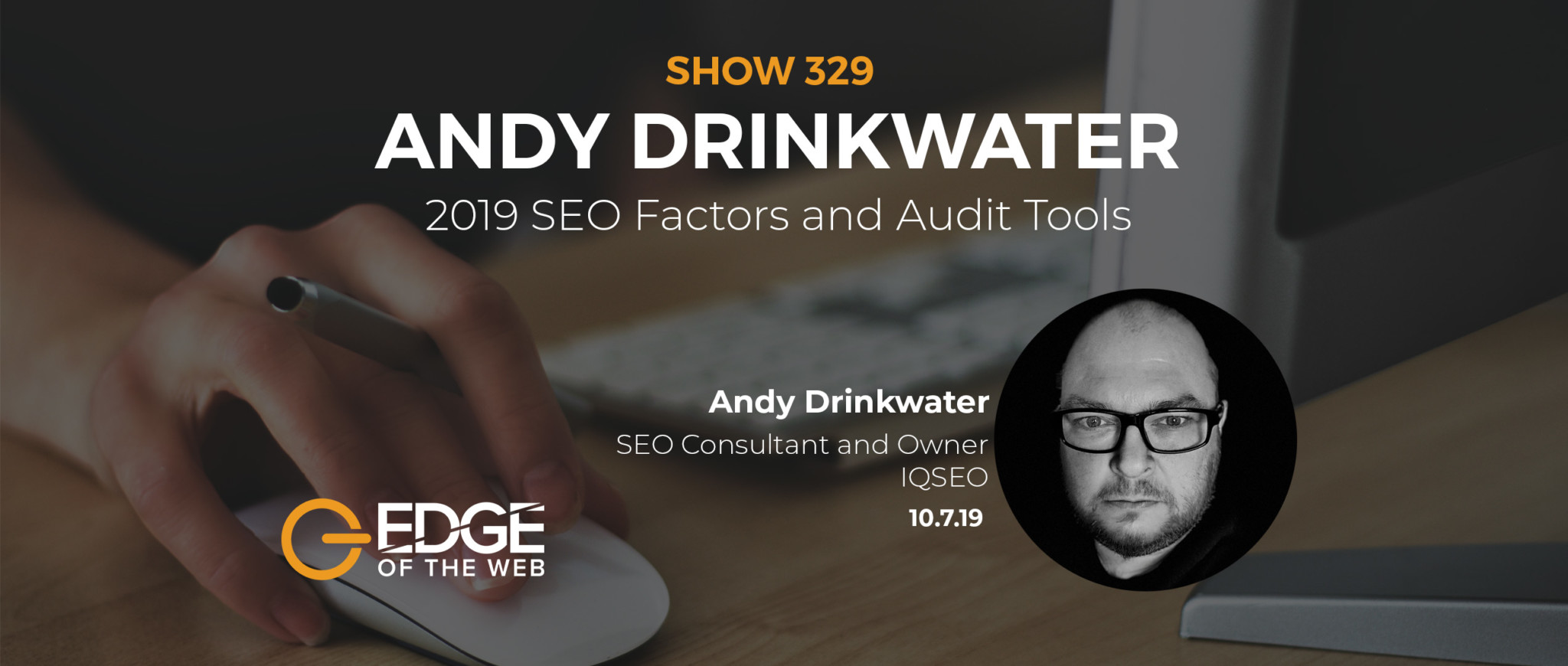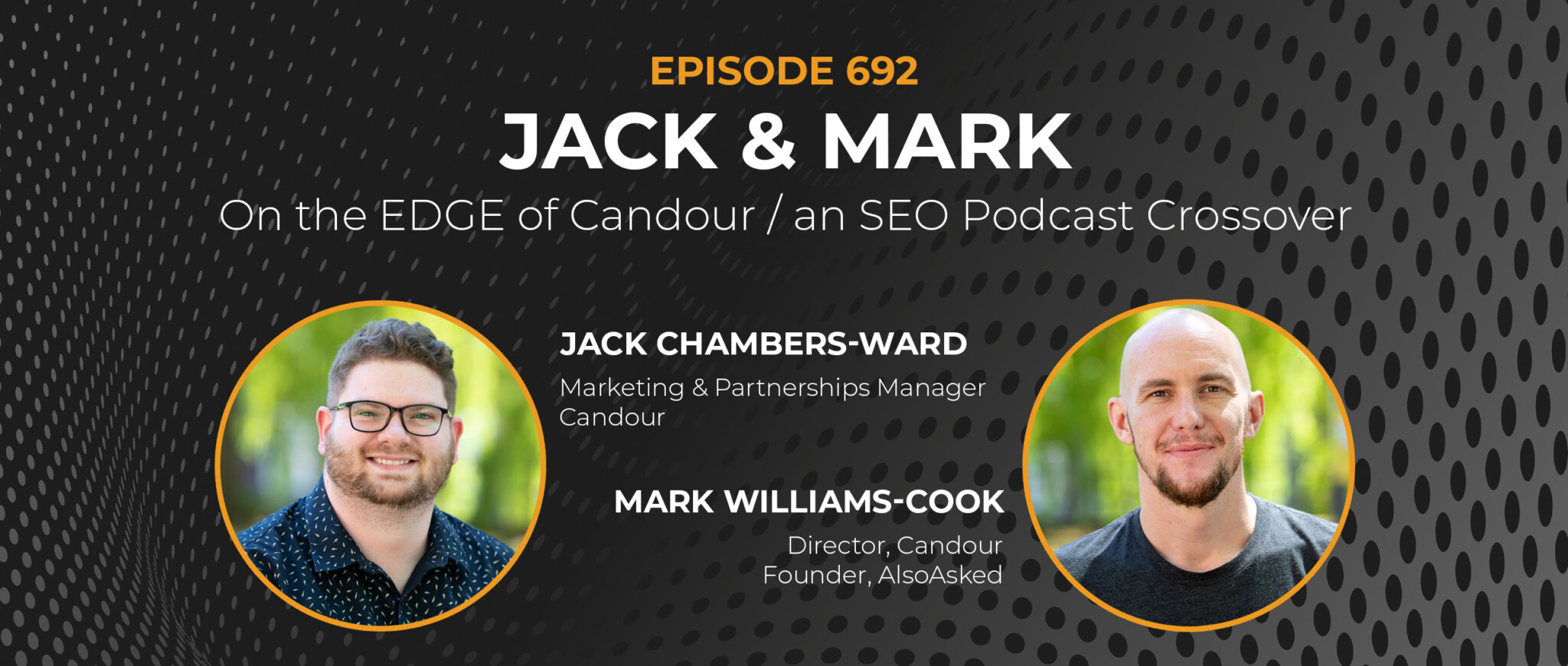When host Erin Sparks spoke with special guest Andy Drinkwater of IQ SEO for Episode 329 of the award-winning EDGE of the Web podcast, they talked about the critical role of SEO Auditing, and some of the key categories you should be digging into and the tools you should be using to get the job done. Here’s what we learned:
Key SEO Audit Area: Competitor Analysis
This one can be a little tricky because you can get bogged down in doing SEO audits on multiple competitor sites, which can be time-consuming. But you clearly want to know about the top search positions, and top-ranking keywords. From there you can go as deep as you want in terms of finding out what your competitors are actually doing to get the results they’ve achieved.
Competitor analysis is important because there’s no point in trying to do your SEO in your own little bubble because it won’t work. You simply have to know what your competitors are doing and let that shape your own strategies and tactics, otherwise, you’re wasting precious resources.
Key SEO Audit Area: Site Structure
There’s a surprising amount to pay attention to in this area, and the reason it’s so important is that Google puts a lot of emphasis on the user experience, and site structure is where those elements come into play. Canonical tags are probably one of the most misunderstood areas of the technical side of things, and they’re very easy to get wrong, and it’s hard to tease out the mistakes. Canonical tags can lead to duplication if done incorrectly. You have to always make sure they’re right.
Google says pagination is less important these days, but redirect chains are interesting to look into. The best tool for evaluating redirect chains is Screaming Frog. It will show you whether it’s a canonical redirect or if a standard redirects through a 301. Remember that the more that you do with redirects, the more you are going to lose your “page juice” or page strength with each hop. If you go too far with redirects, Google stops following them. Site structure and use is a big deal. Andy recalls one of the worst sites he’s ever seen required something like 19 clicks to get to the end page where they were hoping users would end up. Google hates that sort of thing.
What’s useful for clients to see here is a visual crawl analysis where you can see how the content is structured by the amount of content channeled into different areas. This is very revealing, and often very surprising for clients to see. You can show them how Google sees their content by using a tool like the Screaming Frog visual graph.
Why Use Multiple Audit Tools?
Every tool provider has its specialties, so if you want to use the best tool for any given task, you have to open to using a variety of different tools. For example, while Screaming Frog is the best at visually graphing a site’s content to show the big picture, it doesn’t recommend what the content should be. Platforms like SEMrush and Ahrefs do have tools that will actually suggest what content you should have on your site so you can see what’s missing. Netpeak Spider is another one that’s good for this.
You might turn to Sistrix for one piece of the puzzle, and DeepCrawl for another piece of the puzzle (DeepCrawl is especially good for high-volume site crawling). When you first start looking at a website to conduct an SEO audit, you have to poke around a little bit to figure out which areas need the deepest dives, and then go with the best tool for that piece of the job.
More About SEO Audit Tools
For keyword research, SEMrush is a great tool, as is Ahrefs. Each one is a little different in what they provide as far as data, so you might end up using both. For SERP tracking, Andy’s current go-to took is SerpBook – and he trialed 20 different options and polled lots of people to arrive to that choice. This isn’t to say something like RankRanger isn’t just as good. But then you have to get into what it’s going to cost based on what you need it to do. There are many different options for analyzing backlinks, but cognitiveSEO remains a solid tool worth using for it.
Choosing an SEO Auditor
The key to choosing an SEO auditor who is going to do what you need is find a balance between comprehensiveness and affordability. This is where you can use Andy’s 209-Point SEO Audit Checklist to help you choose an auditor. It has 15 broad categories or key areas an audit should cover. Maybe you can’t afford to have every single one of the 209 boxes checked off, but you definitely want all 15 categories to be touched on to some extent.
NOTE: There was a LOT more covered in this episode than is presented here in this blog, both in terms of key audit areas and the best tools to be using, so be sure to catch the full episode at http://bit.ly/33XCNUp. And be sure to visit (and download) Andy’s 209-Point SEO Audit Checklist.
Connect with Andy Drinkwater and IQ SEO
Twitter: @iqseo (https://twitter.com/iqseo)
LinkedIn: https://www.linkedin.com/in/andrewdrinkwater
Website: https://www.iqseo.org
Facebook: @iqseo (https://www.facebook.com/iqseo)
IQ SEO Audit Checklist: https://www.iqseo.org/seo-audit-checklist
Discover the TRUTH About Your Digital Marketing ROI with Site Strategics
If it’s time to find out how you’re really doing on your digital marketing ROI, EDGE sponsor Site Strategics can help! We’ll assemble an insightful report that examines your existing SEO, content, social media, and PPC. Visit https://edgeofthewebradio.com/roi/ to get 30% off a comprehensive review of your digital assets!























